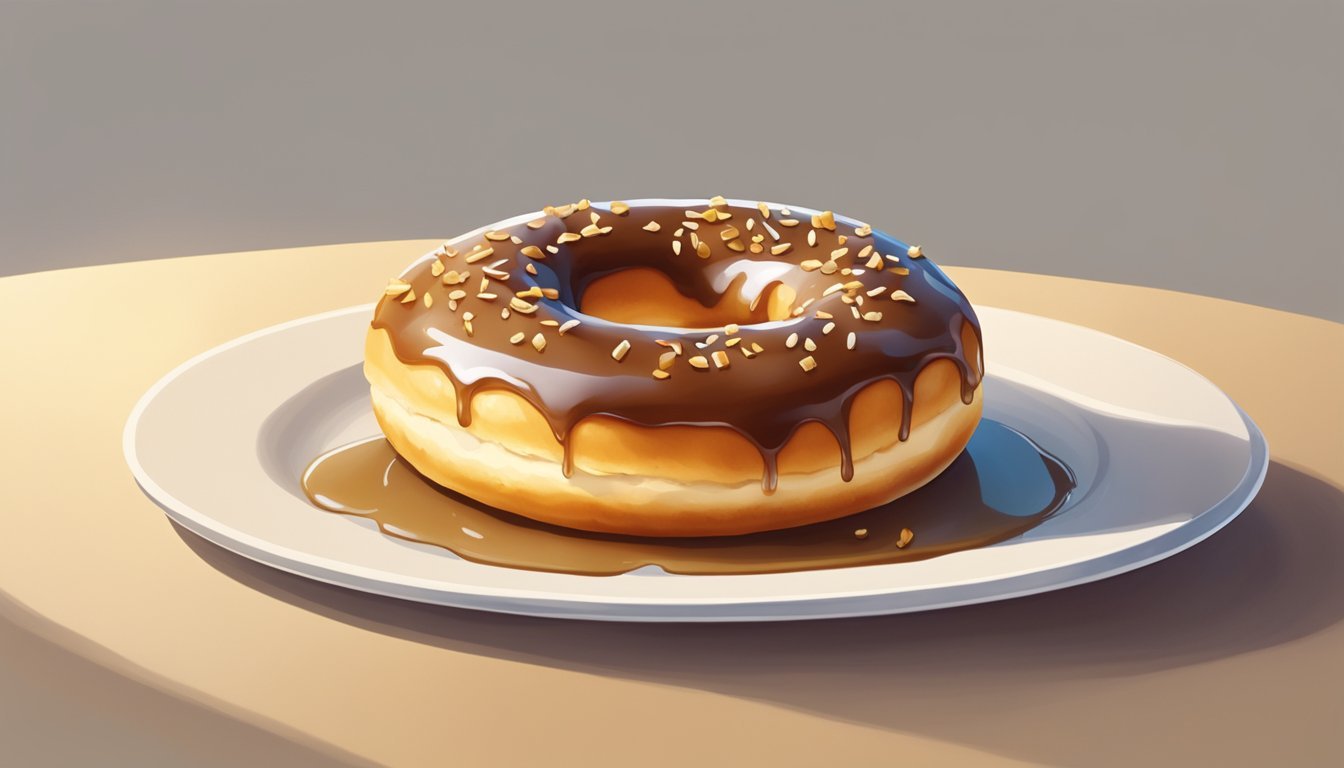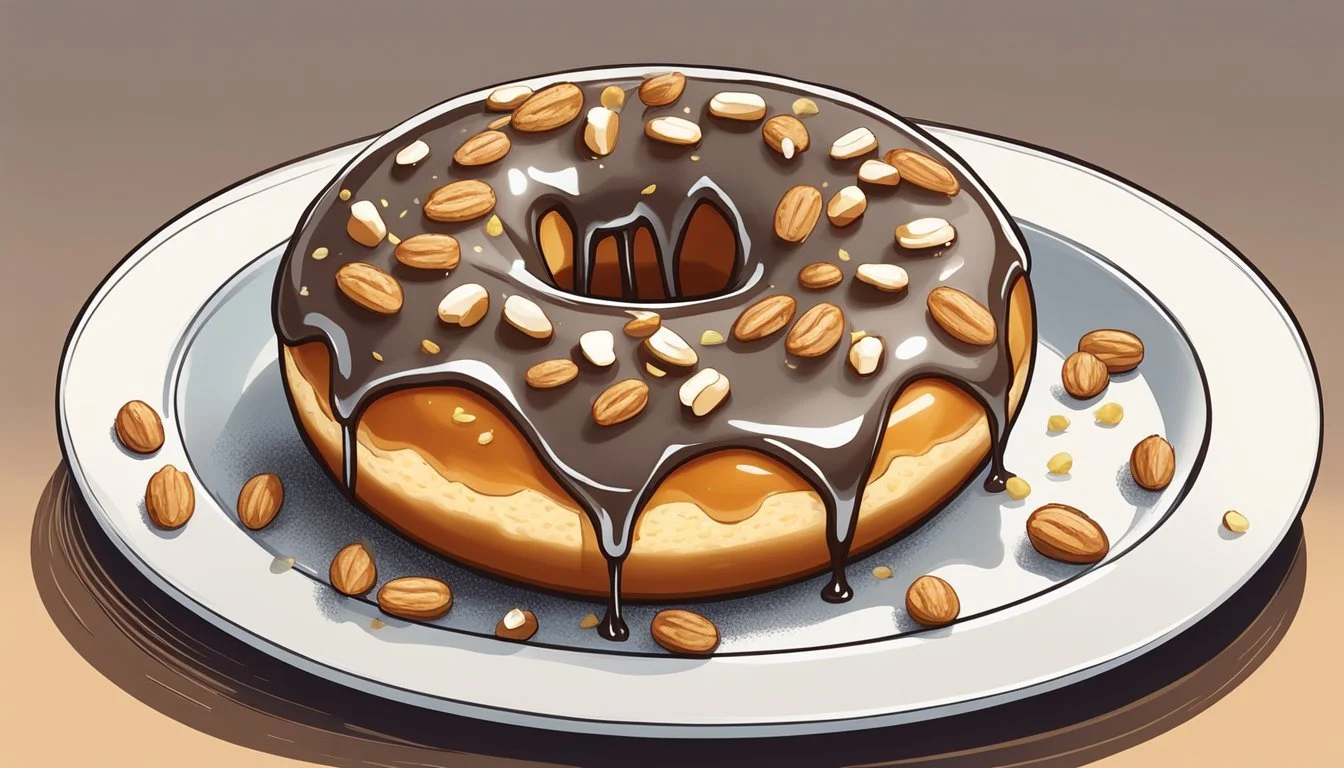How Do You Eat a Maple Glazed Donut
Savoring Each Bite with Expertise
Eating a maple glazed donut is an enticing experience that many find irresistible due to its combination of a soft, tender pastry and a sweet, rich glaze. Crafted from dough leavened with baking powder or yeast, glazed donuts (how long do donuts last?) are then cooked to a golden brown, either by baking or deep-frying. Once cooked through, they are typically coated with a glossy, maple-infused glaze that sets into a delightful shell, contrasting with the fluffy interior of the donut.
Maple glazed donuts offer a unique blend of flavors. The natural sweetness and distinct taste of maple syrup, complemented by the occasional hint of natural spices like cinnamon or nutmeg, infuse into the glaze. This glaze not only enhances the donuts' appeal but also adds to their indulgent taste profile. The light, airy texture of donuts works harmoniously with the rich, viscous layer of glaze, making them a favorite among sweet treat enthusiasts.
When it comes to savoring a maple glazed donut, there is no right or wrong way; it is one's personal preference that guides the experience. Some may prefer to enjoy them freshly baked and still warm, while others might enjoy them at room temperature, where the flavors have had time to meld. A maple glazed donut can be paired with a hot cup of coffee for breakfast, served as a dessert, or simply enjoyed as a snack any time of the day. They are often viewed as a comfort food that appeals to those with a sweet tooth.
Composition of a Maple Glazed Donut
A maple glazed donut combines sweet, buttery flavors with a tender texture. The donut's composition is essential for creating the perfect balance between the airy dough and the rich glaze.
Identifying Quality Ingredients
For the dough, high-quality ingredients are the foundation. It should contain all-purpose flour, granulated sugar, and leavening agents like baking powder and baking soda to ensure a proper rise. Whole milk adds moisture, while unsalted butter provides a subtle richness. Freshness of ingredients like large eggs and room temperature sour cream affects the donut's texture significantly.
The Role of Flavor Enhancers
Flavor enhancers like cinnamon and nutmeg infuse the dough with warm, spicy notes. Vanilla extract elevates the sweetness, and pure maple syrup or maple extract integrate a distinctive maple flavor that makes the donut distinct.
Understanding Dough Consistency
A proper dough consistency is achieved by the correct ratios of dry to wet ingredients. The dough should be slightly sticky but firm enough to hold its shape when piped or cut out.
Types of Maple Glaze
Maple glaze variants are distinguished by their base components: powdered sugar, maple syrup, milk, salted butter, and additional flavorings like maple extract or vanilla. The glaze can range from thin and glossy to thick and rich.
Homemade vs. Store-Bought
Homemade maple glazed donuts can be tailored to personal preference and often boast fresher ingredients. Store-bought donuts from a gourmet donut shop may offer a more polished appearance and consistent quality.
Nutritional Value
Maple glazed donuts are indulgent treats high in calories, sugar, and fat. They are not typically considered health food and are best enjoyed in moderation.
Regional Variations and History
Maple glazed donuts are a staple in both Canadian and American cuisine, particularly associated with the fall season. Their popularity in various regions has led to numerous local interpretations, each with their own history and characteristics.
Preparation Techniques
Crafting the perfect maple glazed donut involves precision and attention to detail in preparation. Each step, from combining ingredients to baking and glaze application, is essential for a delicious outcome.
Mixing Dry and Wet Ingredients
One begins by whisking together all-purpose flour, baking powder, baking soda, and salt in a large bowl to ensure even distribution of leavening agents. In another bowl, they combine wet ingredients like milk, egg, and vanilla extract. It is vital to mix dry and wet ingredients separately before combining to prevent overmixing which could result in a tough donut.
Kneading and Shaping Donut Dough
Once the dough comes together, they lightly knead it on a floured surface. Using a biscuit cutter is common for shaping the dough into perfect circles. If a donut recipe calls for baked donuts, one can press the dough into a non-stick sprayed donut pan, eliminating the need for kneading and cutting.
Proper Baking Methods
To ensure an even bake, one should preheat the oven to the temperature specified by the donut recipe, often around 350°F. The donuts are baked until they're lightly golden and spring back upon touch. They are then transferred to a cooling rack to prevent sogginess from trapped steam.
Applying Maple Glaze Evenly
The maple glaze should be smooth, creamy, and pourable. One can use a piping bag or even a plastic bag with the corner snipped off to drizzle the glaze over the donuts neatly. Alternatively, dipping the donuts directly into the glaze ensures an even coat if one desires a thicker layer.
Alternative Baking Equipment
Not everyone has a specialty donut pan. A muffin pan can serve as a makeshift donut pan. One can roll balls of dough and place them in the muffin cups, using a small cap or similar object to create a hole in the center. This improvisation allows for the creation of donut-like treats with typical kitchen equipment.
Serving and Presentation
When one enjoys a maple glazed donut, the experience can be enhanced by serving it correctly and with style. Factors like temperature and accompaniments play a crucial role in enhancing its flavors, while a thoughtful presentation can make it more appealing to the eyes — and camera lenses.
Serving Suggestions
A maple glazed donut is best served warm, allowing the glaze to maintain a slightly goozy consistency. To warm it, place the donut in a preheated oven at 350°F for a few minutes until it's gently heated through. Serving alongside a cup of hot coffee or tea can complement its sweetness, while a glass of cold milk can provide a refreshing contrast.
Decorative Toppings
Adding toppings such as a sprinkle of cinnamon sugar, crushed pecans, or even a drizzle of coconut oil can amplify the texture and flavor profile of the donut. One should apply these toppings just before serving to ensure they remain crisp and do not become soggy from the glaze.
Dish Pairings
Maple glazed donuts fit perfectly with a variety of brunch (What wine goes well with brunch?) items. They can be sliced and served alongside french toast, pancakes, or waffles for a sweet touch. Integrating these donuts into a brunch spread can satisfy a sweet tooth and add diversity to the meal options.
Photography Tips for Sharing
Before taking a photo, ensure the lighting is natural and bright to bring out the donut's aesthetic appeal. One can enhance the Instagram-worthiness of the dish by arranging it on a plate without overcrowding, adding some of the aforementioned toppings for texture, and maybe a steaming mug of coffee in the background to create a cozy vibe. The proper use of angles and a clean background helps in capturing the allure of the dish, making it ready for food photography sharing.
Remember, the goal is to make the maple glazed donut look as irresistible and delectable as it tastes.
Storage and Preservation
Proper storage enhances donut longevity and flavor retention. Here's how to ensure maple glazed donuts remain tasty.
Keeping Donuts Fresh
For optimal freshness, maple glazed donuts should be stored in an airtight container at room temperature. This method keeps them edible for one to two days. If the donuts contain cream or fruit fillings, they're best kept refrigerated due to the perishable nature of these ingredients.
Reheating for Best Flavor
When ready to serve, reheating can revive the flavors of a maple glazed donut. In an oven preheated to 350°F (175°C), place donuts on a baking sheet for about 5-7 minutes. Alternatively, wrap the donut in a damp paper towel and heat in the microwave for 15-second intervals until warm. Avoid overheating to maintain quality.
Freezing Techniques
For long-term storage, freezing is effective. Wrap individual donuts in plastic wrap and place them in a freezer-safe bag or container. Maple glazed donuts can be frozen for up to three months. Thaw at room temperature while still wrapped to minimize moisture loss before reheating in the microwave, oven, or toaster to restore warmth and texture.
Health and Dietary Considerations
When indulging in a maple glazed donut, one should consider the health and dietary aspects of its ingredients. This section breaks down how to align the sweet treat with various dietary preferences or restrictions.
Substituting Ingredients
Maple glazed donuts typically consist of wheat flour, sugar, dairy ingredients, and, of course, maple flavoring. However, for those with dietary restrictions or health concerns, substitutes can be used without greatly altering the taste or texture of the donut.
Gluten-Free Flour: One can opt for a gluten-free flour blend instead of traditional wheat flour. Gluten-free flour usually combines various types of flour such as rice, almond, or coconut flour, which are designed to mimic the texture and baking properties of wheat flour.
Sugar Alternatives: The maple glaze and dough mixture often contain high amounts of sugar. Substituting white sugar with natural sweeteners such as honey, maple syrup, or even sugar-free alternatives like stevia can reduce overall sugar content.
Dairy-Free Milk: Those who are lactose intolerant or avoiding dairy can use dairy-free milk options. Almond milk, soy milk, and oat milk are popular choices that offer a similar consistency with different nutritional profiles.
These substitutions help customize maple glazed donuts to various dietary needs while maintaining their delightful flavor and appeal.





